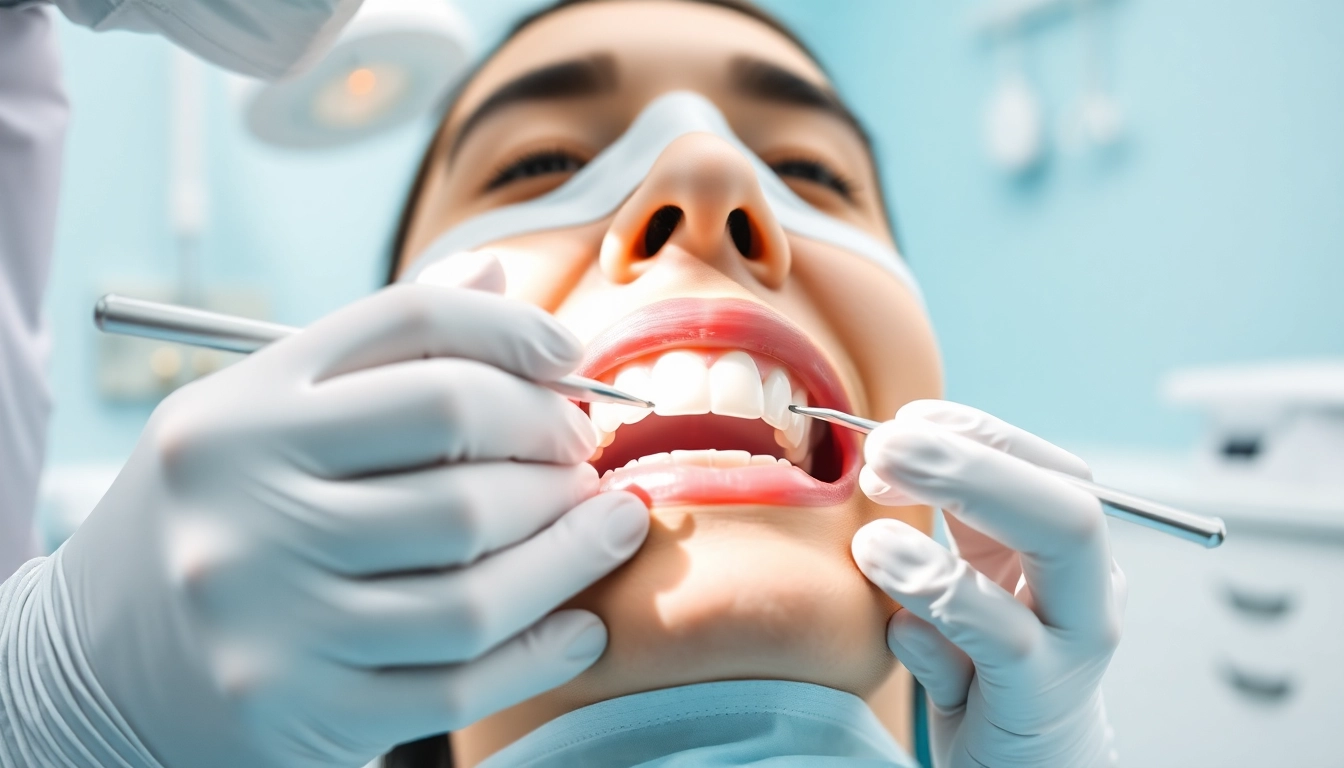Understanding Dental Bridges
Missing teeth can significantly affect your appearance, self-esteem, and ability to chew food properly. Fortunately, dental bridges offer a reliable solution to replace lost teeth, restoring both functionality and aesthetics. But what exactly are dental bridges, and how can they improve your dental health? This article will delve into all aspects of dental bridges—including their types, benefits, procedures, and more—providing a comprehensive resource for anyone considering this dental solution. For more information regarding bridges, feel free to explore further.
What Are Dental Bridges?
A dental bridge is a restorative dental appliance used to replace one or more missing teeth by anchoring onto adjacent teeth or dental implants. This type of restoration bridges the gap created by the missing teeth, restoring your ability to chew and speak as you normally would. The bridge consists of two or more crowns on either side of the gap (known as abutment teeth) and a false tooth, or teeth, in between (known as pontics). Dental bridges are generally made from materials like porcelain, ceramic, or metal for durability and a natural appearance.
Types of Dental Bridges Explained
There are several types of dental bridges, each tailored to meet specific needs based on the condition of the teeth and the jawbone:
- Traditional Bridges: The most common type, consisting of two abutment crowns supporting one or more pontics. These are generally used when there are healthy teeth on both sides of the gap.
- Cantilever Bridges: Used when there is only one adjacent tooth available for support. This type is less common but may be suitable in certain cases.
- Maryland Bonded Bridges: Also known as resin-bonded bridges, they use a framework of metal or porcelain that is bonded to the back of the adjacent teeth. This type is often used for front teeth replacements.
- Implant-Supported Bridges: These incorporate dental implants for stabilization. A bridge can be anchored to two or more implants if several teeth are missing, providing enhanced support and longevity.
How Bridges Improve Dental Health
Dental bridges serve essential functions beyond mere aesthetics. They help maintain the shape of your face, improve your ability to chew and speak, and prevent the remaining teeth from shifting out of position. Here’s how they contribute to overall dental health:
- Prevention of Teeth Shifting: When a tooth is lost, the surrounding teeth may lean into the gap, leading to misalignment. A bridge holds the remaining teeth in their rightful positions.
- Improved Functionality: Bridges restore biting and chewing abilities, allowing you to enjoy a varied diet without restriction.
- Bone Preservation: Although bridges do not stop bone loss as effectively as implants, they help distribute the forces of chewing, which can minimize bone deterioration in certain cases.
Benefits of Choosing Dental Bridges
Choosing dental bridges can lead to numerous benefits, enhancing both your dental health and quality of life. Here are some of the most significant advantages:
Aesthetic Enhancements with Bridges
One of the most significant benefits of dental bridges is their ability to improve your smile. Bridges can be color-matched to your natural teeth, providing a seamless and aesthetically pleasing result. This enhancement can lead to increased confidence and self-esteem, allowing you to smile freely without feeling self-conscious about missing teeth.
Restoring Functionality and Chewing Ability
Missing teeth can severely limit your ability to chew and enjoy your favorite foods. Bridges effectively restore this functionality, enabling you to eat with ease. Furthermore, they assist with proper speech, making it easier to articulate words clearly without worrying about gaps affecting your pronunciation or airflow.
Long-Term Durability of Bridges
When maintained properly, dental bridges can last many years—typically between five to fifteen years or more. This longevity makes them a cost-effective solution for tooth replacement, especially when compared to other options that may require more frequent replacements.
The Dental Bridge Procedure
The process of getting a dental bridge typically involves multiple visits to your dentist. Here’s an overview of what to expect during the procedure:
Initial Consultations and Assessments
The journey begins with an initial consultation where your dentist will assess your dental health, determine the need for a bridge, and discuss the best options for your situation. Diagnostic tools, like x-rays, may be utilized to evaluate the condition of your gums and any remaining teeth.
The Step-By-Step Procedure
Once the treatment plan is created, the procedure generally involves the following steps:
- Tooth Preparation: The dentist will prepare the abutment teeth by removing a portion of enamel to create space for crowns.
- Impressions: After preparation, impressions of your teeth will be taken to create custom crowns and pontics that fit your mouth accurately.
- Temporary Bridge: A temporary bridge may be placed while your permanent one is being crafted in a dental lab.
- Placement of the Permanent Bridge: Once ready, the dentist will check the fit and make necessary adjustments before permanently cementing the bridge in place.
Aftercare and Maintenance of Bridges
After your bridge is placed, care is essential for long-term success. Key aftercare practices include:
- Oral Hygiene: Brush and floss regularly, especially around the bridge, to prevent gum disease and decay.
- Regular Dental Visits: Schedule periodic check-ups with your dentist to monitor the bridge’s condition and ensure your overall dental health.
- Avoiding Hard Foods: Be cautious with very hard foods that could place excess pressure on your bridge or natural teeth.
Common Concerns About Dental Bridges
Despite their benefits, patients often have concerns when considering dental bridges. Here, we address a few common ones:
Addressing Pain and Discomfort
After the procedure, some discomfort or sensitivity is normal, especially if preparations were made to the abutment teeth. This usually subsides within a few days. Over-the-counter pain relief medications can provide relief if necessary. If discomfort persists, consult your dentist.
Potential Complications and Risks
As with any dental procedure, there are potential risks, including:
- Bridge Failure: If the supporting teeth fail or deteriorate, the bridge may become loose or need repairs.
- Avant Garde Issues: If improper placement occurs, it may lead to adverse conditions, such as gum disease or cavities in adjacent teeth.
Choosing an experienced dentist can mitigate many of these risks. Regular check-ups can help maintain the integrity of your bridge and overall dental health.
Comparing Bridges with Other Dental Solutions
When considering tooth-replacement options, it’s crucial to compare bridges with alternatives such as dental implants and dentures:
- Dental Implants: Considered the gold standard for tooth replacement, implants involve surgery to place a titanium post into the jawbone, providing strong support for crowns. While more expensive, they offer better preservation of jawbone and overall longevity.
- Partial Dentures: These are removable appliances designed to replace one or several missing teeth. While less invasive, they can be less stable than bridges and may require more frequent replacements or adjustments.
Conclusion: Are Dental Bridges Right for You?
Dental bridges offer a practical solution for restoring missing teeth, blending durability, aesthetics, and functionality. However, determining whether they are suitable for you involves reviewing your unique dental situation with your dentist.
Consulting Your Dentist for Options
Discuss your concerns, preferences, and medical history with your dentist, who can guide you to the best choice based on your specific needs. They will help you weigh the pros and cons of bridges against other options, ensuring you make an informed decision.
Understanding Cost Considerations
The cost of dental bridges varies depending on several factors, including the type of bridge, materials used, and individual dental practices. Generally, dental insurance plans offer some coverage for bridges, making them a financially viable option if planned properly.
Moving Forward with Confidence in Dental Health
Whether choosing a dental bridge or another option, the goal remains the same: to achieve optimal dental health and enhance your quality of life. By investing in your dental health, you are also investing in your overall well-being. Remember, maintaining regular dental visits and practicing good oral hygiene are crucial for preserving your dental restorations and natural teeth for years to come.



